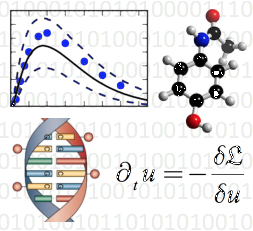Drug Disposition and Effect¶
Acetaminophen¶
To characterize and quantify the ADME (absorption, distribution, metabolism, and excretion) of acetaminophen and its potential for toxicity, we have developed and applied a population-based model using data from a comprehensive set of literature studies 1, models to characterize the effects of race/ethnicity on pharmacokinetics 2, and a novel method to predict ingested dose in cases of overdose 3.
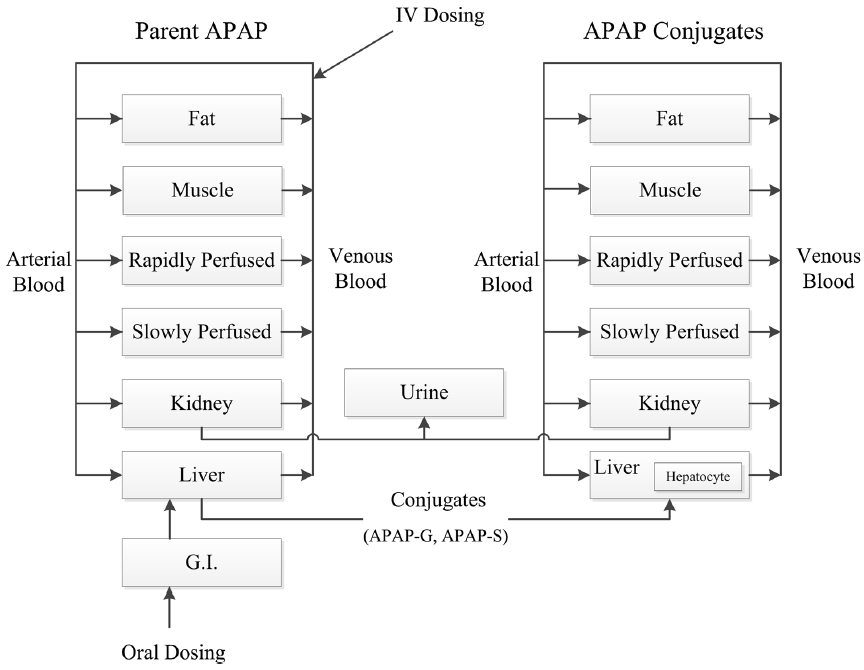
PBPK model structure¶ |

Pharmacokinetic predictions versus experimental data¶ |

Pharmacokinetic phase space¶ |
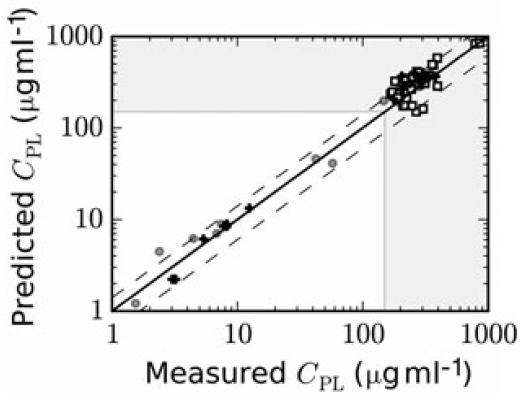
Dose predictions versus experimental data¶ |
Anti-tuberculosis agents¶
We have conducted experimental and computational studies to characterize the disposition of capreomycin 4, examined the ADME of rifampin 5, and investigated how current and alternative dosing regimens affect the pharmacokinetics and potential efficacy of rifapentine 6.
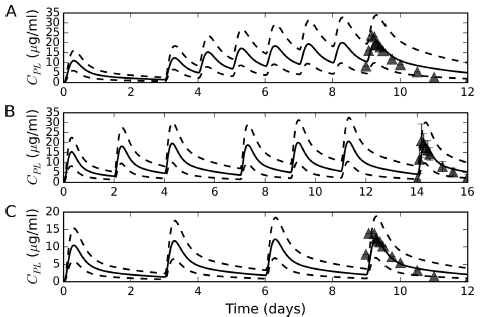
Multidose simulations¶ |
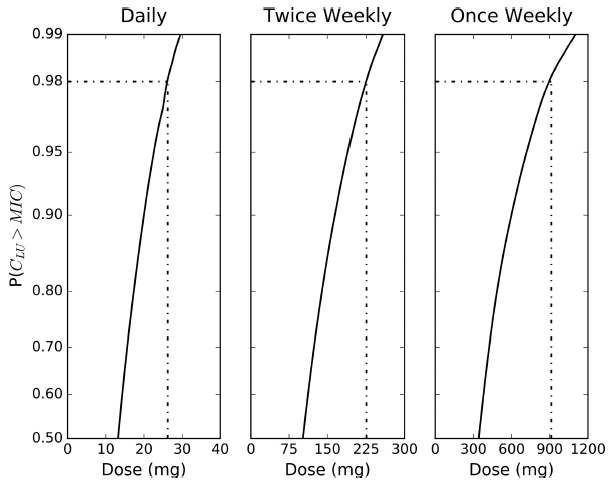
Dosing efficacy predictions¶ |
Anti-malarial agents¶
We currently have several projects underway to better understand the disposition and pharmacodynamics of anti-malarial drugs.
Drugs used in veterinary medicine¶
Our group is one of the few who has developed the capacity to predict tissue-level pharmacokinetics using physiologically realistic models for the cat. Using these models, we are examining the effects of disease state on the biodistribution and clearance of several drugs commonly used to treat feline diseases.
